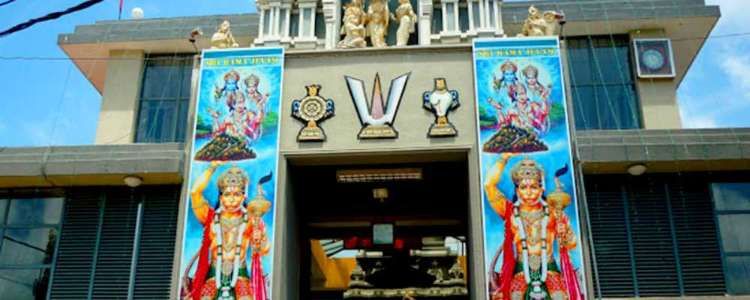Ramayana Places
Munneshwaram Temple
According to Ramayanaya after defeating demon king Ravana and rescue his wife Sita, Lord Rama felt that he was being followed by Bramathathi Dosam as he killed Ravana who was a Brahmin. He stopped at this place and asked God Siva for a remedy. God Shiva blessed and advice Lord Rama to install and pray four lingams at Manavari, Thirukoneshwaram, Thiruketheeswaram and Rameshwaram in India to get rid of dosam.
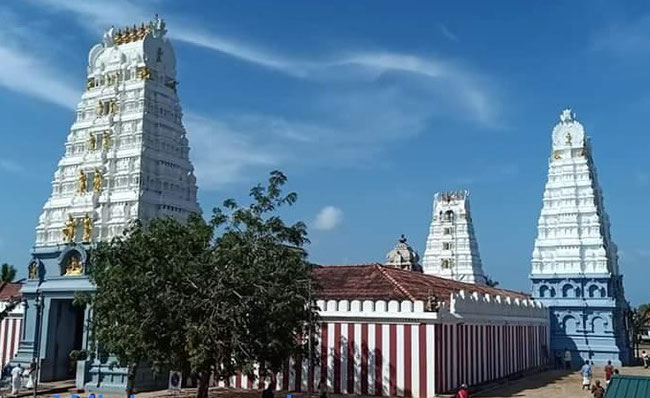
Manavari Temple
Manavari is the first place where Lord Rama installed the Shiva Lingam and prayed after the end of the war with King Ravana. This Lingam is called Ramalingam because it was made by Lord Rama.
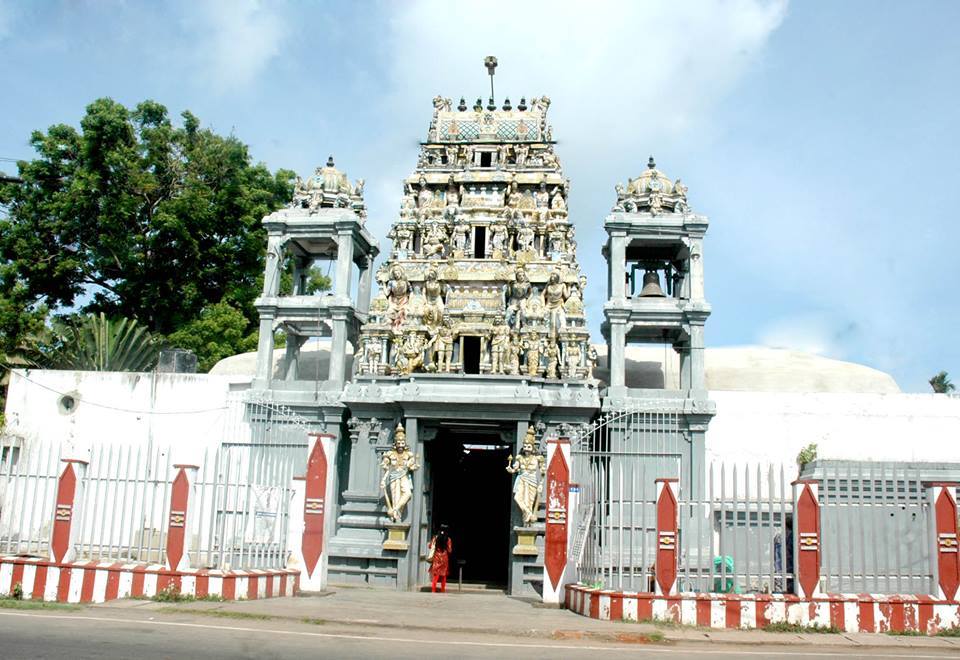
Ritigala
This is a mountain range located in the North Central Province of Sri Lanka. The 70 caves in this area have been used as dwellings by the early inhabitants of Sri Lanka and subsequently as monasteries. Legend details that during the Rama – Rawana war Rama’s brother Luxhmana was injured and Hanuman was sent to Himalayas to fetch medicinal herbs. Hanuman had forgot the name of the herb so had brought a chunk of the peak containing many herbs. However, the mountain fragment slipped and broke into five pieces of which one fell to Ritigala.
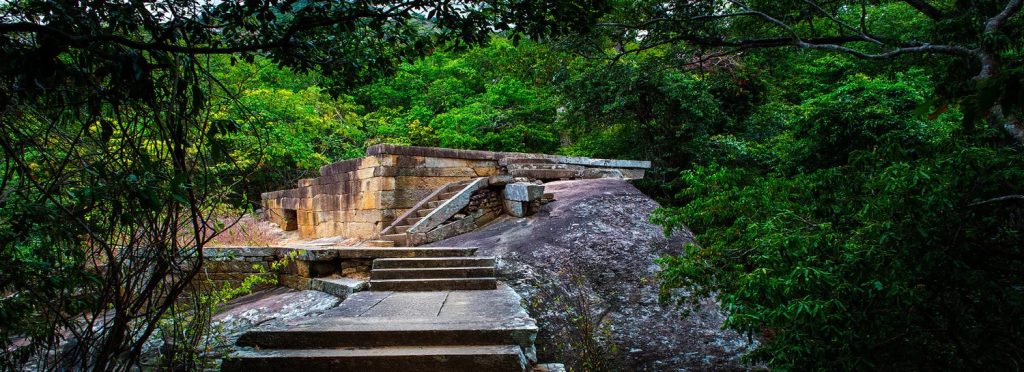
Thiru Koneswaram Temple
According to legends, this temple was built by Rishi Agastya on the instructions of Lord Shiva who was inspired by the commitment of king Ravana.It is believed King Ravana and his mother used to worship Lord Shiva at this temple. After the victory over Ravana, this is one of the four places where Lord Rama installed Shiva lingam to get rid of Bramathathi Dosam.
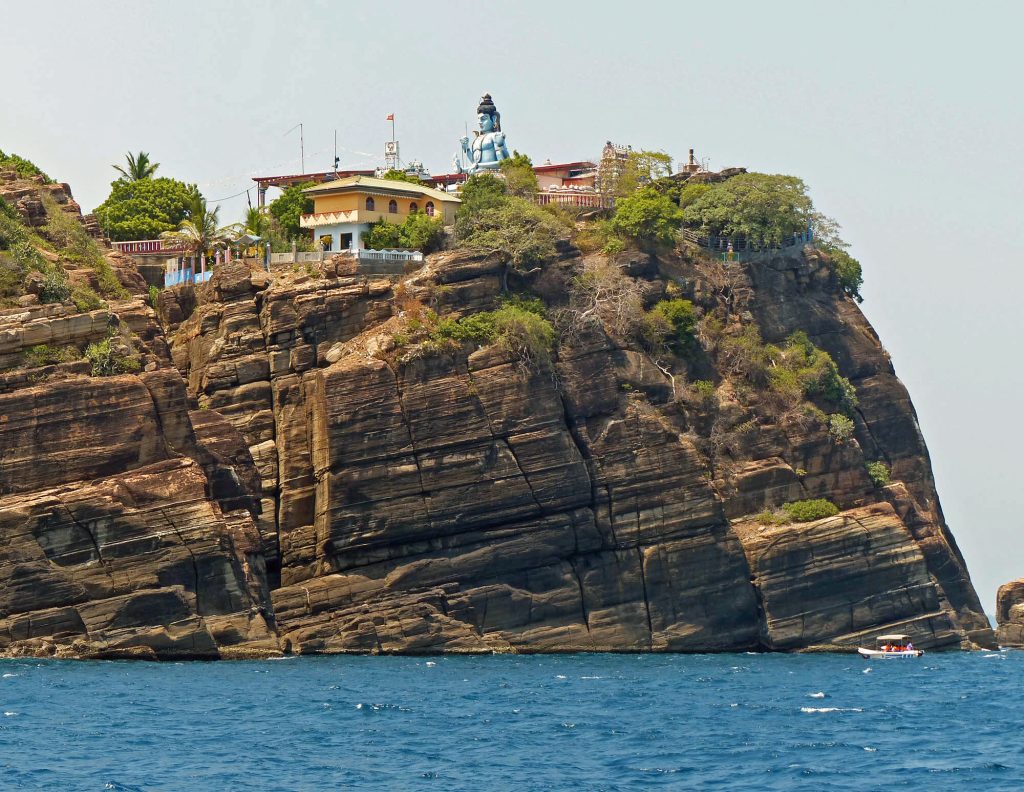
Shankari Devi Temple
Adjacent to Koneswaram temple there is another small shrine, with some significance for Hindu pilgrims. The original Shankari Devi temple, said to be built by Ravana.
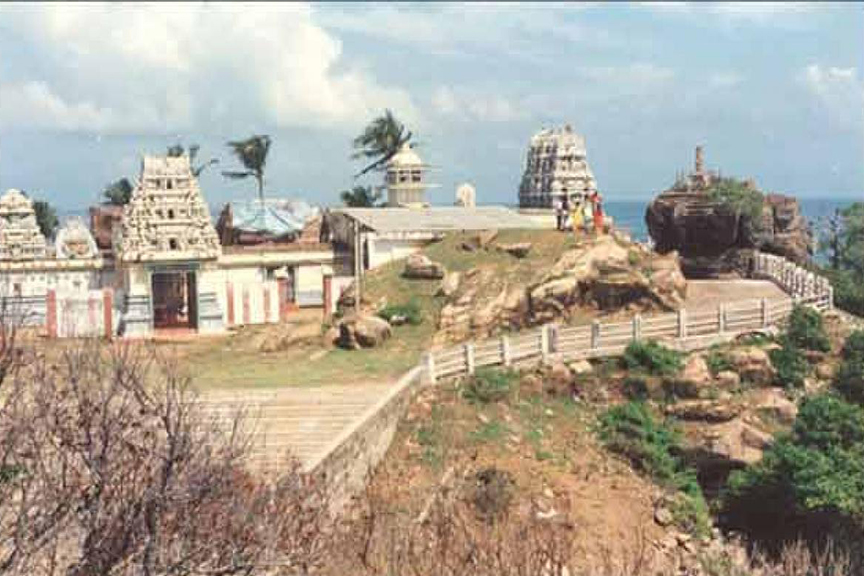
Kanniya Hot Springs
It is believed that this is the place where King Ravana carried out the last rites for his mother. When he was unable to find water to duly perform the rites, his anger pierced his Trishula into the ground seven times. Water started gushing out immediately. The very hot water cooled down to the present degree when Ravana’s anger calmed down. The temperature of each water hole is different.
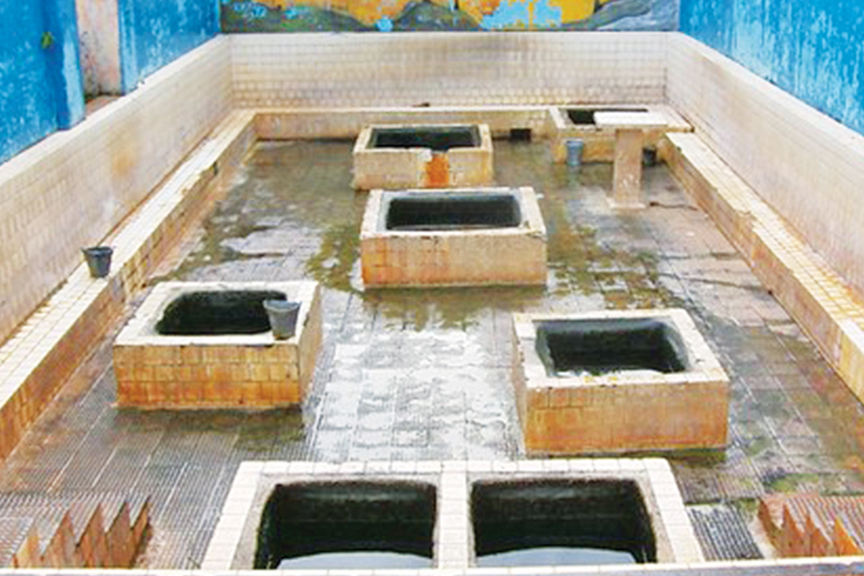
Sigiriya
An enormous 360 meter high-rock converted to a fortress by the parricidal King Kashyapa I, who reigned for 18 years between 477 and 495 A. D. He cleared the rocky summit and built his palace as an abode of God King. Simultaneously, the surrounding lands of the rock transformed into a Royal pleasure Garden. Some historians believe Sigiriya to have a connection with Ramayana. It is believed that the plateau top was the site of King Ravana’s palace, made of solid gold and crafted by Kubera, the God of Wealth, around 5000s years ago. Also believed, the cobra hood cave is where King Ravana imprisoned Princess Sita, after abducting her.
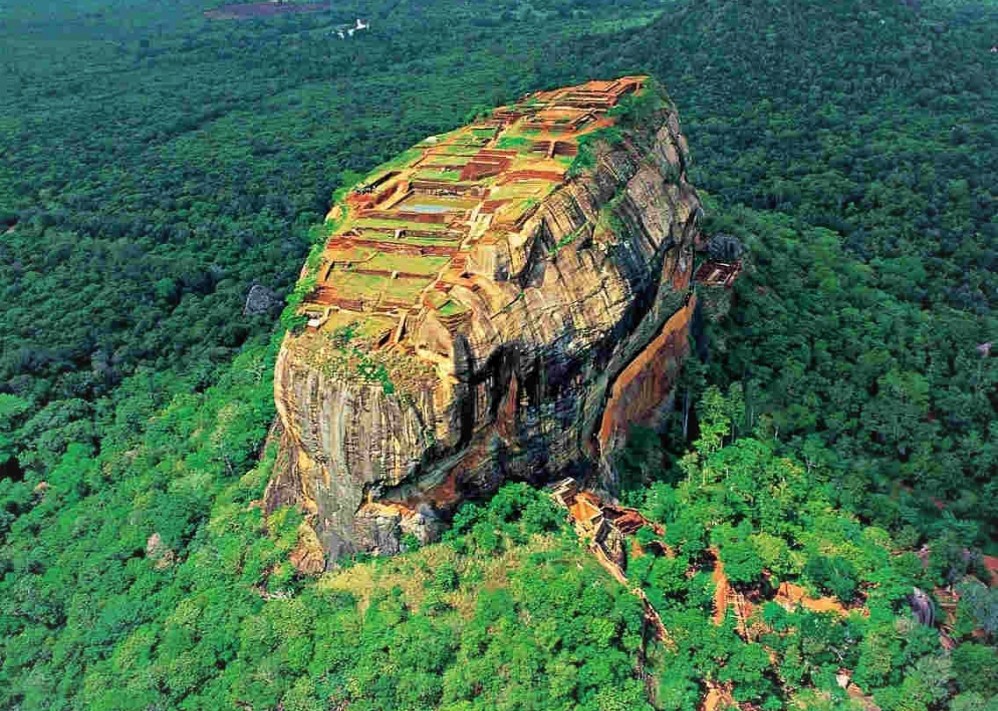
Seetha Kotuwa
The place where the city of Lankapura once stood. The city had a beautiful palace for queen Mandothari surrounded by waterfalls, streams and varieties of flora and fauna. Sita was kept in this palace until she was moved to Ashoka Vatika. Seetha Kotuwa means Sita’s fort and got its name because of Seetha’s stay here.
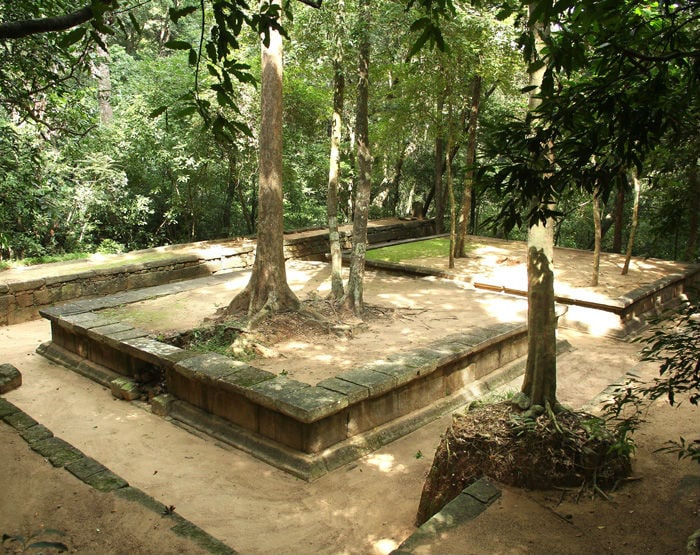
Sri Bhakta Hanuman Temple
In the hills of Ramboda where Hanuman was searching for Sita, the Chinmaya Mission of Sri Lanka built the Sri Bhakta Hanuman Temple which is visited by thousands of devotees every year.
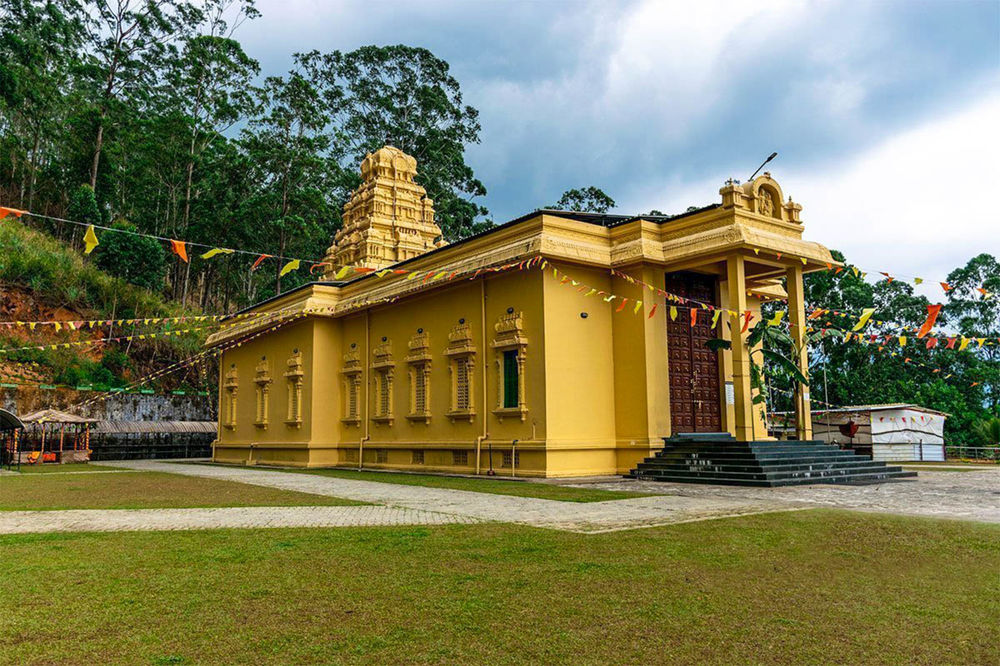
Sita Amman Temple
Sita Amman temple - a temple dedicated to Princes Sita. The temple is built on the sides of the stream where Sita bathed. The temple today is a modern building with its paintings, statues and pillars decorated with sculptures; all depicting the tale of Rama and Sita.
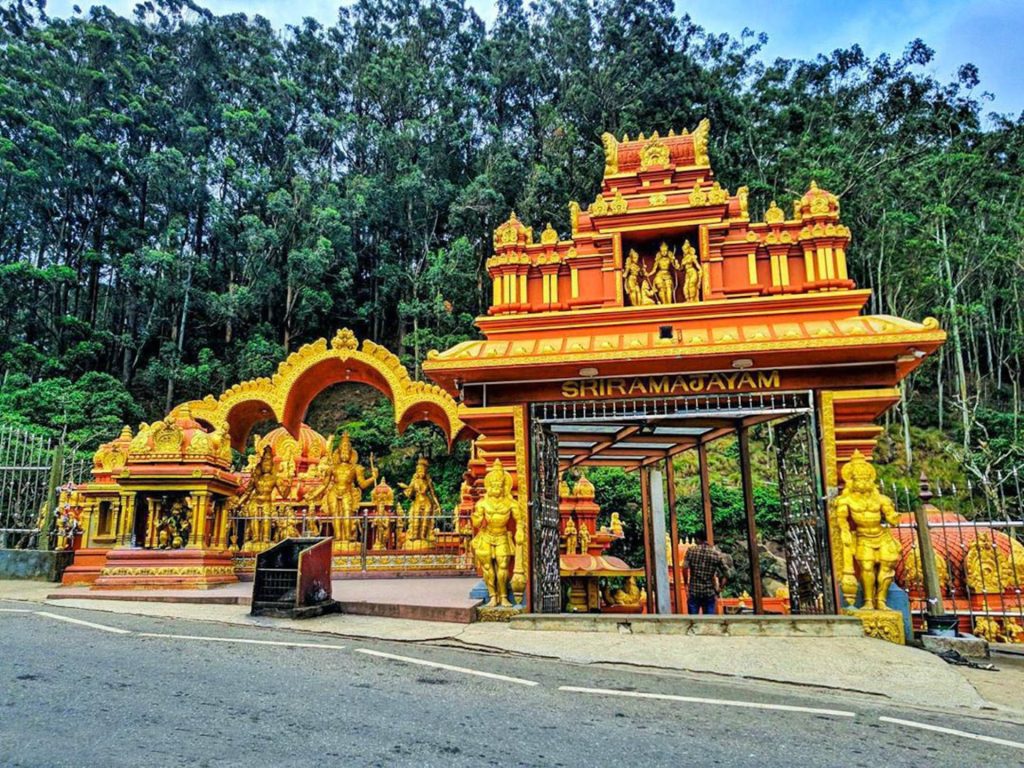
Gayathri Peedam
This is the first temple dedicated for Goddess Gayathri. This was founded by Gayathri Siddhar Sri Murugesu Maharishi. This was founded by Gayathri Siddhar Sri Murugesu Maharishi. It is believed that Maghanada, son of king Ravana had conducted Nikumbala Homam at this place after the victory of battle against the Gods.
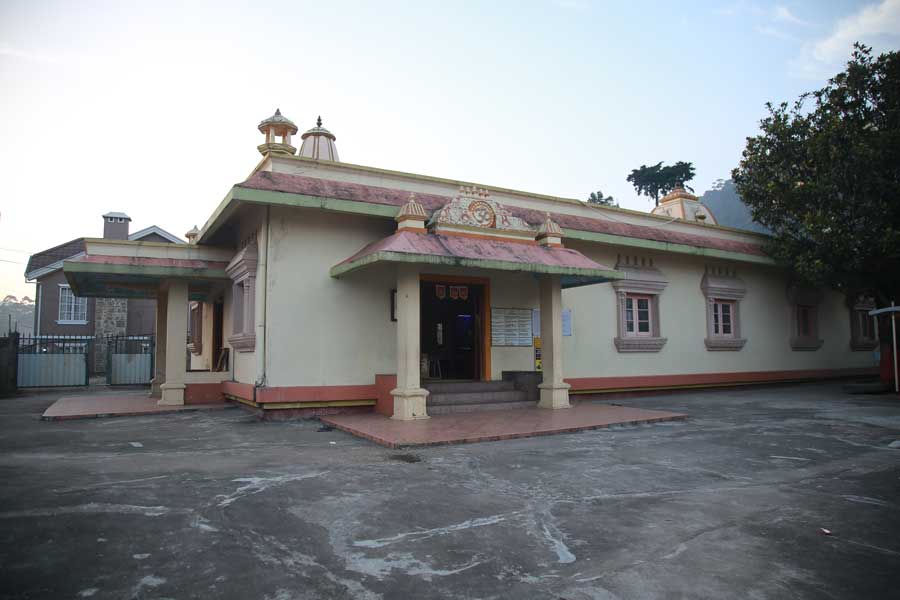
Haggala Botenical Garden
This place is mentioned in the Ramayanaya as Asoka Vatika. (The Garden of Asoka Tree) According to legends, this is one of the pleasure gardens of King Ravana and he kept the Princes Sita here. It was here where the meeting took place between her and Hanuman, who brought her Rama’s ring with the news that Rama was looking for her.
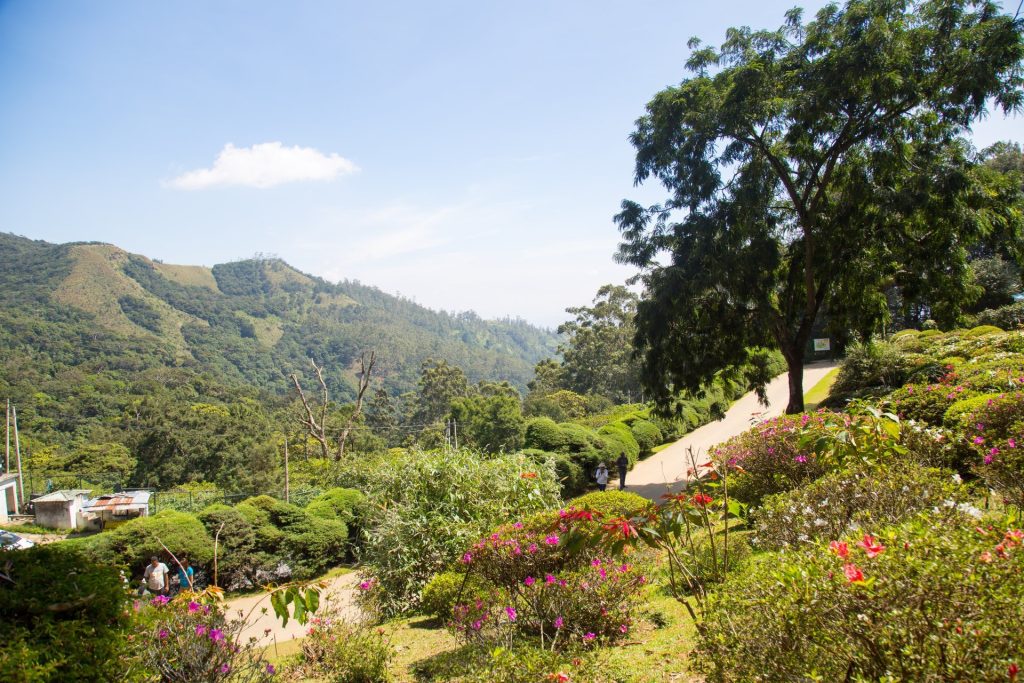
Divurumpola Temple
This is the place where Sita performed her Agni Pariksha (proving her chastity) to her husband Rama. Continuing the practice for thousands of years, villagers still pledge their fidelity or take oaths there and even in certain courts, this agreement was binding. This place has been respected and worshipped by people down the ages.
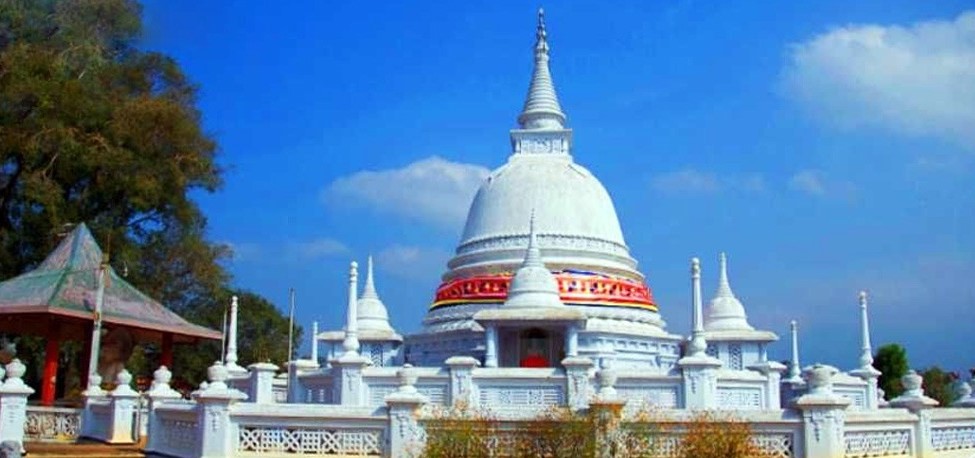
Ravana Ella
King Ravana is said to have lived in one of the caves above the waterfall.
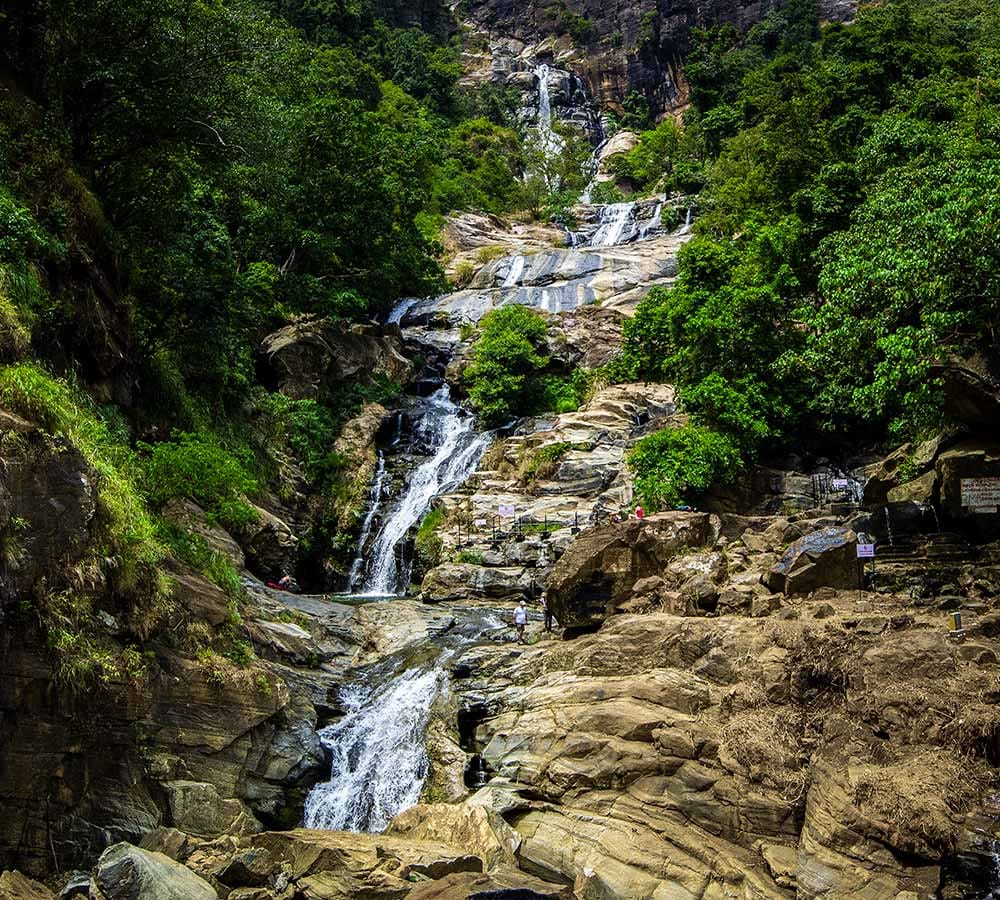
Ravana cave
This cave that proves the architectural brilliance of King Ravana. The underground tunnels are served as a quick means of transport through the hills and also as a secret passage. They networked all the important cities and airports. There have been reports stating that the tunnel leads to an underground open area with a lake and rooms, which are assumed to be parts of Ravana's palace. It is believed to have been the cave where Sita was imprisoned.
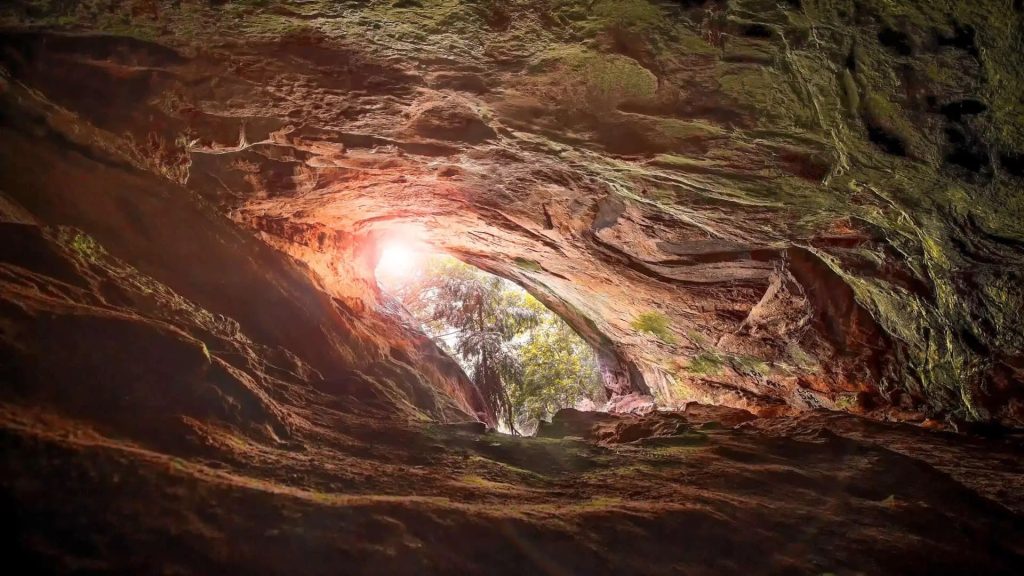
Lord Karthikeya Temple
Lord Karthikeya temple in Kataragama was built by King Dutugamunu in the 2nd century B.C. According to Ramayanaya Lord Karthikeya was requested to go to the battlefield by Lord Indra on the last day of the war. This was done to protect Lord Rama from the wrath of Brahmastra aimed by King Ravana which otherwise would have weakened Lord Rama. The benefit was one of the most powerful weapon Brahmastra aimed at Lord Rama for the second time was rendered useless by the presence of Lord Karthikeya.
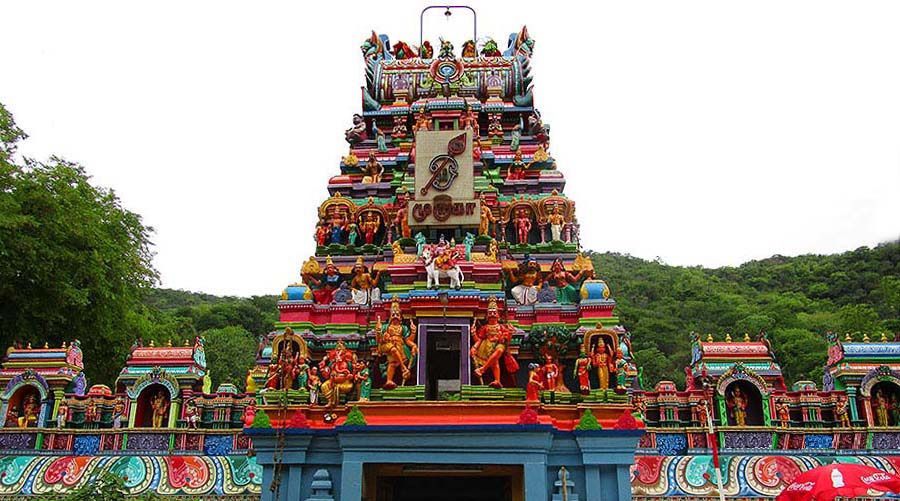
Ussangoda
According to Ramayana, after meeting Sitadevi Lord Hanuman decided to test the strength of the mighty King Ravana and his army of Rakshasas. In the events that unfolded Lord Hanuman’s tail was set on fire by the Rakshasas, who in turn went on to torch some parts of King Ravana’s empire. It is believed that Ussanggoda is one of the torched areas, which is said to have been an airport used by King Ravana.
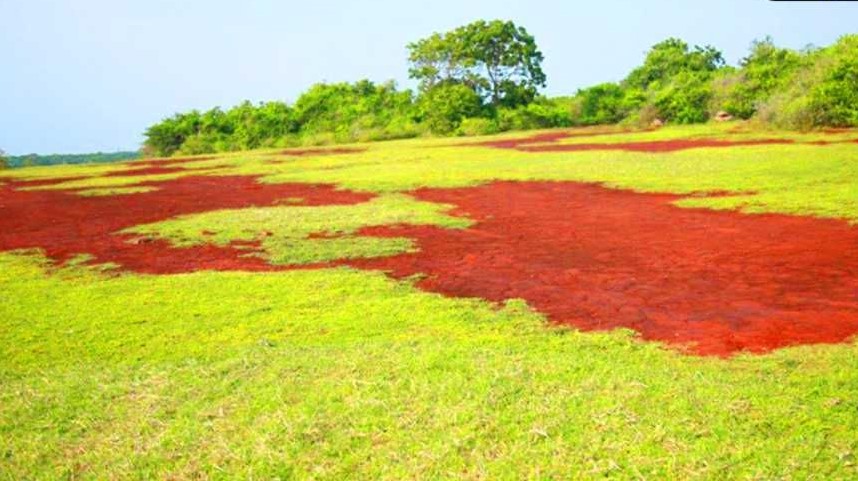
Rumassala
Rumassla a massive hill oddly out of place just outside the Galle harbour. Legend details that during the Rama – Rawana war Rama’s brother Luxhmana was injured and Hanuman was sent to Himalayas to fetch medicinal herbs. Hanuman had forgot the name of the herb so had brought a chunk of the peak containing many herbs. However, the mountain fragment slipped and broke into five pieces of which one fell to Rumassala.
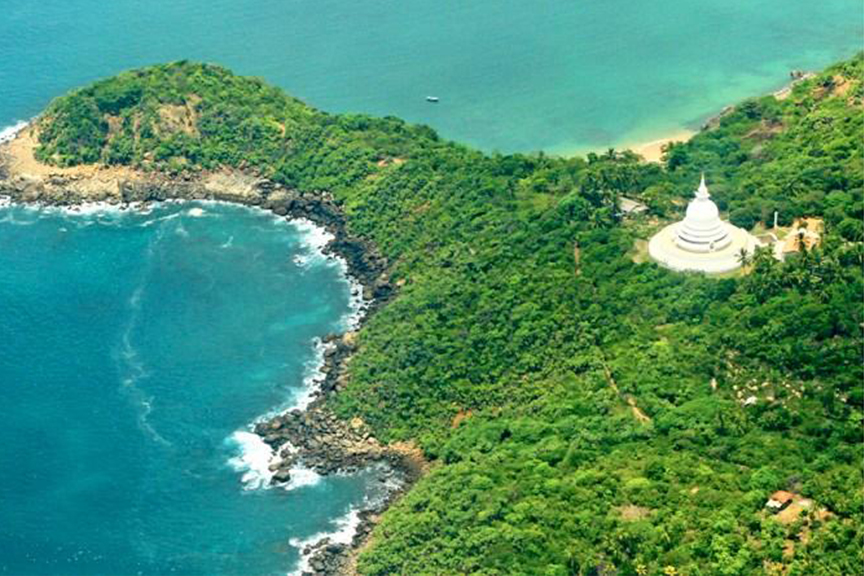
Kelaniya
Buddhists believe this place was sanctified during the third and final visit of the Buddha to Sri Lanka, eight years after gaining enlightenment. Sri Lankan chronicle Mahawamsa records that the original stupa at Kelaniya is enshrined with a gem- studded throne on which the Buddsha sat and preached. Within the temple premises there is a shrine dedicated to Lord Vibhishana who was the younger brother of King Ravana. After Ravana’s death, Prince Laxmana crowned Vibhishana as the new king of Lanka since he was a supporter to Rama. Kelaniya is the place where King Vibhishana ruled the island. Vibishana is venerated by Sri Lankan Buddhists as a God as they believe him to be one of the protectors of the island.
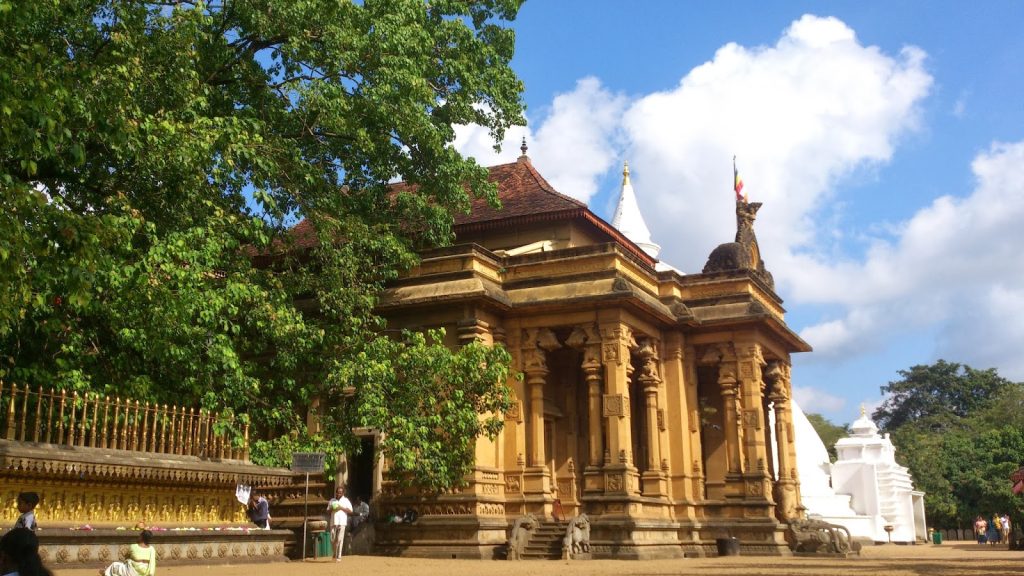
Anjaneyar Temple
This temple is dedicated to God Hanuman. The temple’s name was derived from how Hanuman is addressed by Tamils - “Anjaneyar” as his mother's name is Anjan. This Kovil is the first temple in Sri Lanka and the only one on the island dedicated to Lord Hanuman in his Panchamuga form; meaning five faces.
